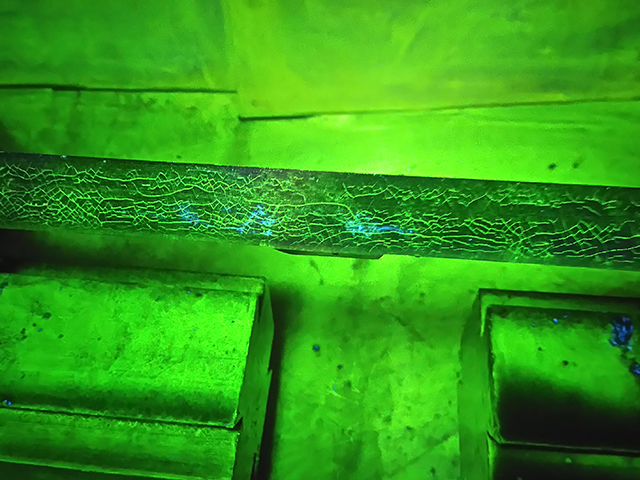
Basic Principles of Magnetic Particle Testing (MT)
Magnetic particle inspection (MT) is a non-destructive testing method, which is based on the following physical principle:
The magnetic lines of force spread out in different ways in ferromagnetic materials subject to inspection.
So-called local poles form at the discontinuities in the material to be inspected; fine-grained magnetic particles sprinkled on the test surface cluster at the cracks, thus forming a visible indication of surface and slightly subsurface discontinuities.
Fluorescent or visible (non-fluorescent) magnetic particles can be used in magnetic particle testing (MT), depending on the testing conditions.
The following methods can be applied in magnetic particle testing (MT):
- Magnetization by using a hand yoke;
- Current flow technique;
- Magnetization by using conductors;
- Coil shot technique.
Magnetic particle testing is used to detect surface and slightly subsurface volumetric and planar discontinuities. Magnetic particle inspection (MT) is particularly useful for detecting crack-like discontinuities. A great advantage of this method is quickness; it gives immediate indications of defects.
The inspection of high- or low-temperature parts is not a problem in magnetic particle testing (MT), and this method can be used for detecting different defects, primarily crack-like defects, even through a thin coating, provided that the surface to be inspected is uncontaminated.
In addition to the above listed advantages, magnetic particle inspection (MT) also has disadvantages. One of its main disadvantages is that this testing method is restricted to ferromagnetic materials. Its another major disadvantage is that subsurface defects can only be detected under specific conditions and with the use of specific tools.
Our highly qualified inspectors have gained extensive experience in conducting magnetic particle testing (MT). Our reference works include, inter alia, magnetic particle testing (MT) of a bucket wheel excavator and a mining conveyor of the lignite mine in Bükkábrány, as well as magnetic particle testing (MT) conducted for the hydroelectric power plant in Tiszalök when renovating its units.
Our inspectors strive for maximum accuracy in conducting each test, including magnetic particle testing (MT), thus they prepare test pieces according to the given testing conditions before a test is initiated.
As regards magnetic particle inspection (MT), the test surface must be clean to metal and free from greasy and oily impurities, as properly prepared surface contributes to the precise detection of defects.

